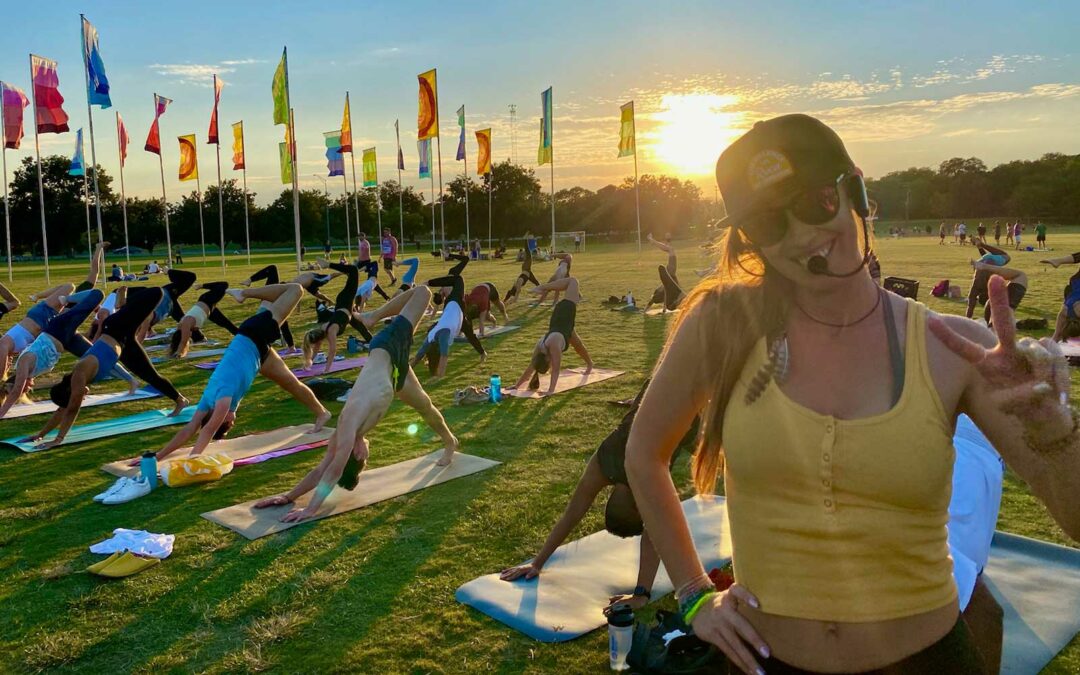Vinyasa yoga, also known as flow yoga, offers several benefits that make it a popular and highly regarded form of exercise and mindfulness practice. Here are some reasons why Vinyasa yoga is considered good for you:
Physical Fitness: Vinyasa yoga is a physically demanding practice that helps improve flexibility, strength, and endurance. The continuous flow of poses challenges various muscle groups and enhances overall physical fitness.
Cardiovascular Health: The dynamic nature of Vinyasa yoga can elevate your heart rate, leading to cardiovascular benefits. It can help improve circulation, lower blood pressure, and promote a healthier heart.
Stress Reduction: The synchronization of breath with movement in Vinyasa yoga encourages mindfulness and helps reduce stress and anxiety. Focusing on the present moment can promote relaxation and mental well-being.
Improved Flexibility: Vinyasa yoga includes a wide range of poses that target different parts of the body. Regular practice can lead to increased flexibility, making daily movements easier and reducing the risk of injury.
Strength Building: Many Vinyasa poses require core strength and stability. Consistent practice can lead to a stronger core, improved posture, and better overall muscular tone.
Balance and Coordination: Vinyasa sequences often incorporate balancing poses that challenge your coordination and proprioception (awareness of your body in space). This can enhance your overall balance and coordination.
Weight Management: Engaging in regular Vinyasa yoga sessions can help with weight management by burning calories, increasing metabolism, and promoting a healthier lifestyle.
Mind-Body Connection: Vinyasa yoga encourages a strong connection between the mind and body. By focusing on your breath and the sensations in your body, you can develop greater self-awareness and mental clarity.
Adaptability: Vinyasa yoga can be adapted to suit various fitness levels and individual needs. Whether you’re a beginner or an experienced yogi, you can modify the practice to meet your goals and limitations.
Variety and Creativity: Vinyasa classes often offer a wide variety of sequences, so you can experience different combinations of poses and movements. This variety keeps the practice interesting and engaging.
Spiritual Growth: While not religious in nature, Vinyasa yoga can be a spiritual practice for some, as it encourages self-reflection and a deeper understanding of oneself.
Community and Support: Practicing Vinyasa yoga in a group class can provide a sense of community and support. It allows you to connect with like-minded individuals and share the benefits of yoga together.
In Vinyasa yoga, there isn’t a single specific “Vinyasa yoga move.” Instead, Vinyasa yoga is characterized by a continuous flow of movements and poses linked together in a sequence, with a strong emphasis on the coordination of breath and movement. The term “Vinyasa” itself refers to the transition between two yoga poses that is synchronized with a specific breath pattern, often involving a combination of plank, chaturanga, upward-facing dog or cobra, and downward-facing dog.
Here’s a description of what a typical Vinyasa flow sequence might look like:
Start in a standing position at the front of your yoga mat, often in Mountain Pose (Tadasana).
Inhale as you raise your arms overhead into Upward Salute (Urdhva Hastasana).
Exhale as you fold forward into Forward Fold (Uttanasana).
Inhale, lift your chest slightly, and look forward in Half Forward Bend (Ardha Uttanasana).
Exhale as you step back into Plank Pose.
Lower down slowly with an exhale into Chaturanga Dandasana (a low push-up position).
Inhale, as you transition into Upward-Facing Dog (Urdhva Mukha Svanasana) with your chest lifted and legs off the mat, or Cobra Pose (Bhujangasana) with your thighs and pelvis on the mat.
Exhale as you push back into Downward-Facing Dog (Adho Mukha Svanasana).
From Downward Dog, you can either hold the pose or flow through the sequence again by stepping or jumping forward to Forward Fold and then inhaling back up to Upward Salute.
This is just one example of a Vinyasa flow sequence. In reality, Vinyasa yoga offers a wide variety of sequences and poses, and the specific movements can vary from one class to another. The key is the continuous and smooth flow of movements coordinated with your breath, which creates a dynamic and meditative practice that helps build strength, flexibility, and mindfulness. Vinyasa classes may also incorporate a variety of other poses and movements beyond this basic flow to keep the practice interesting and challenging.
It’s important to note that the benefits of Vinyasa yoga may vary from person to person, and consistency in practice is key to experiencing these advantages. Additionally, it’s always a good idea to consult with a healthcare professional before starting any new exercise routine, especially if you have underlying medical conditions or injuries.
Sign up for our next Vinyasa (Flow) Yoga Class.

